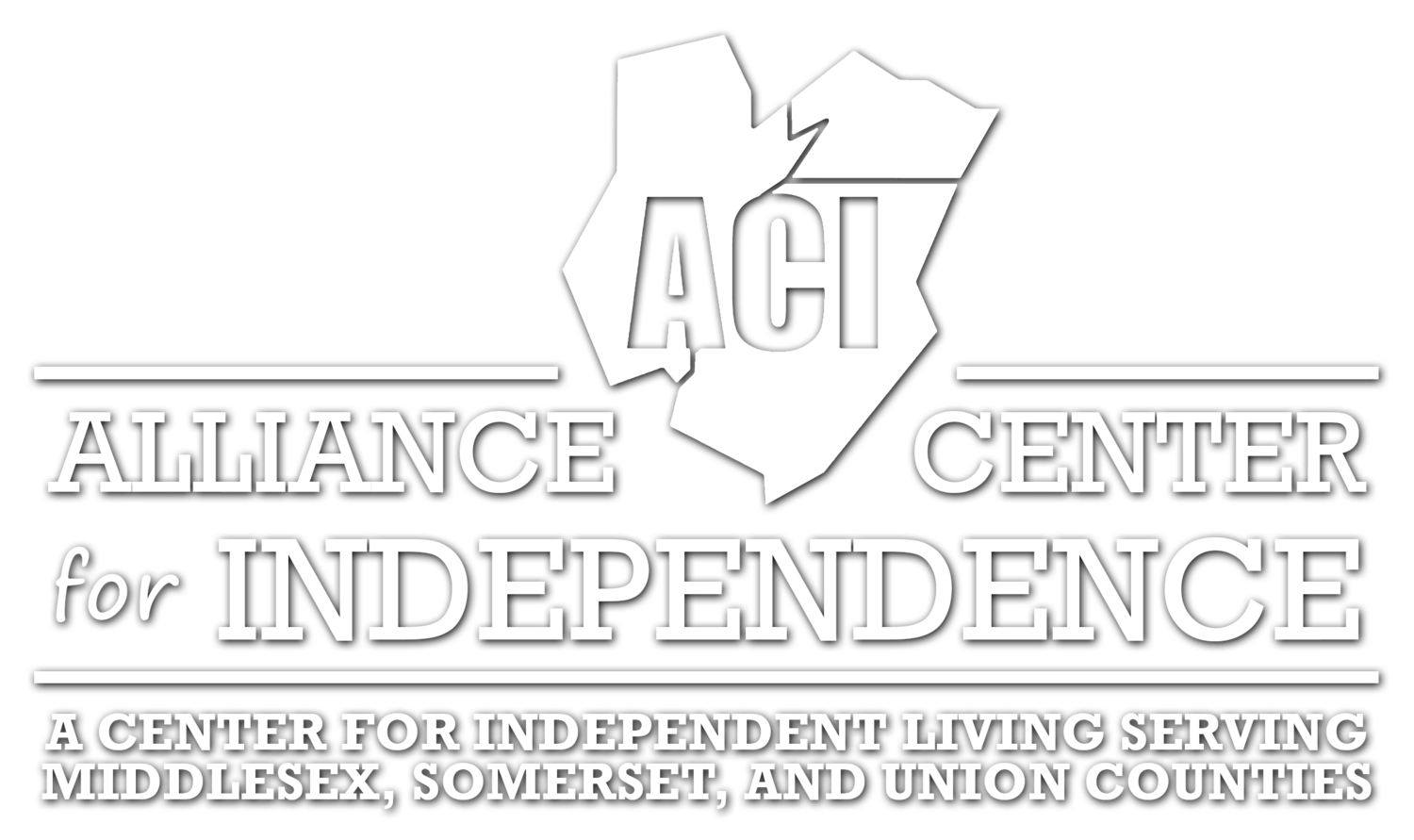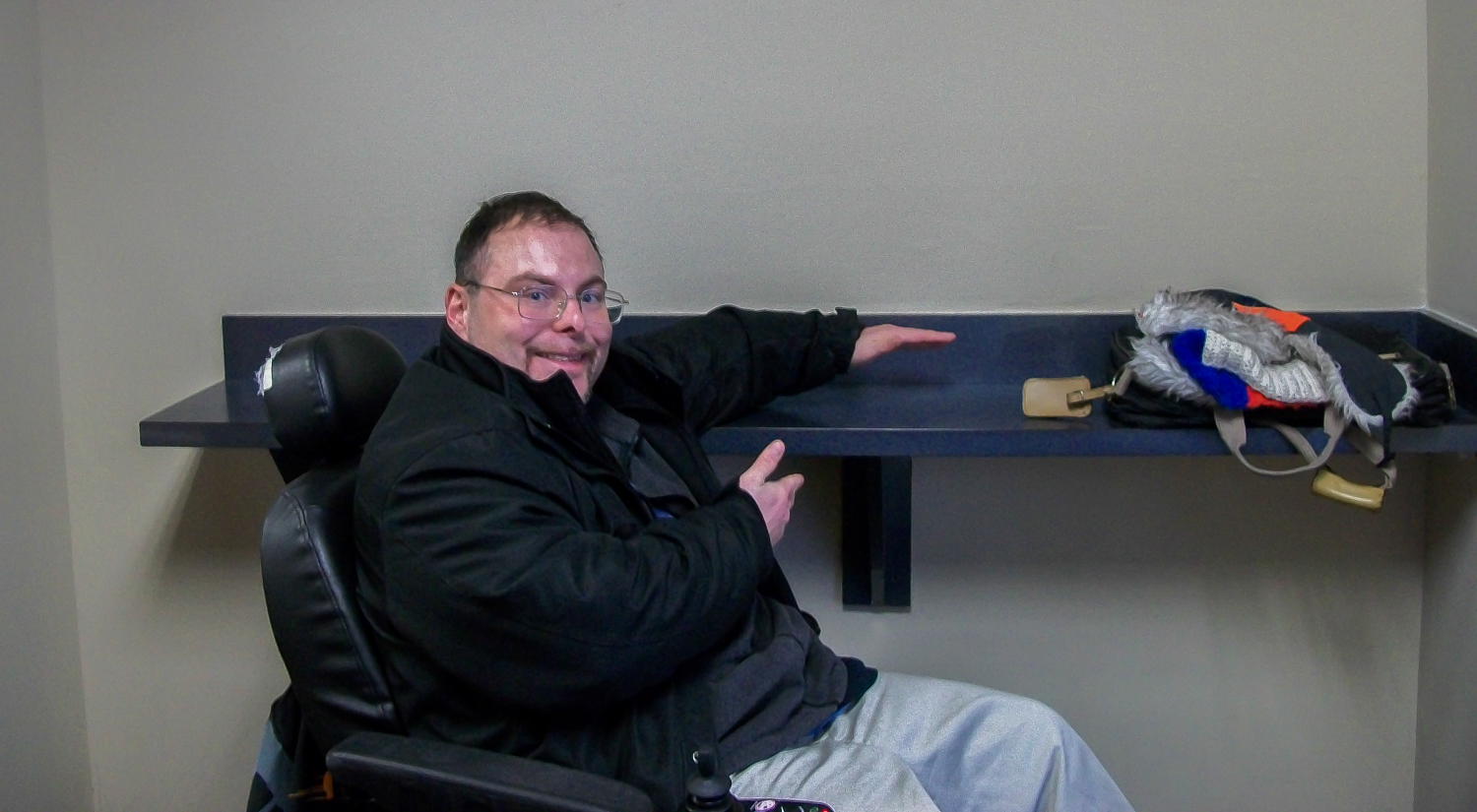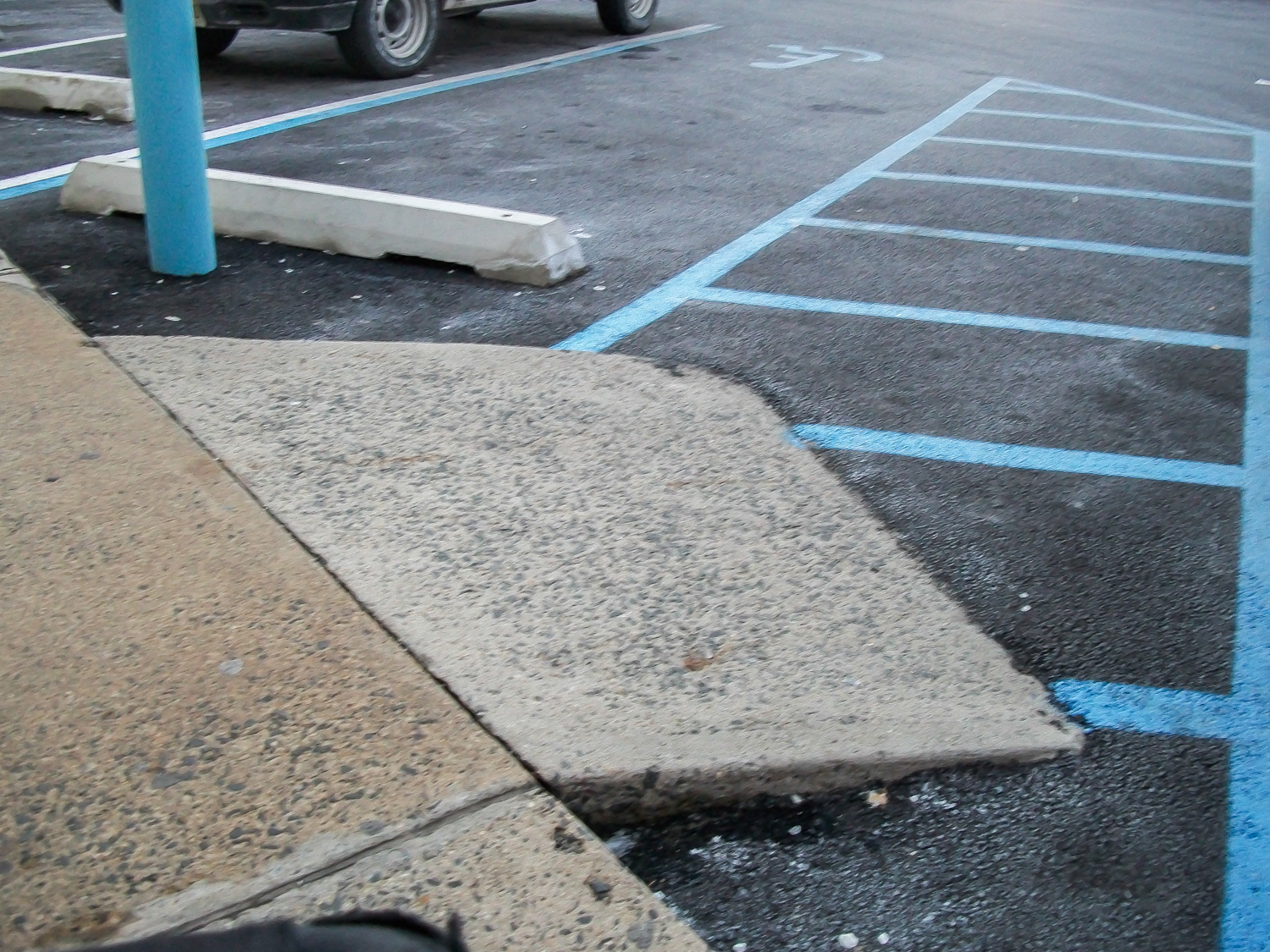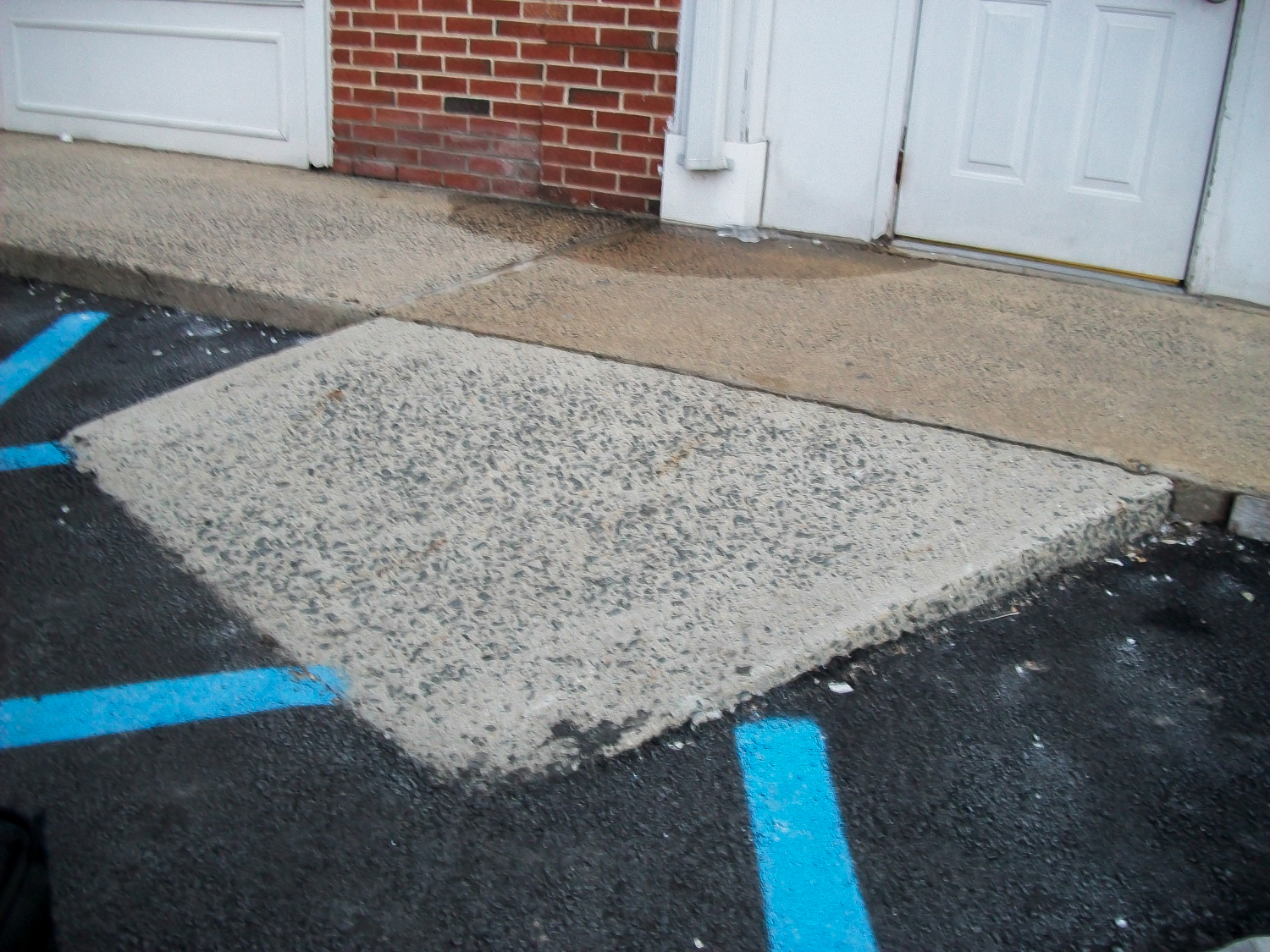Thanks to the help of ACI, the Wells Fargo Bank in South Plainfield, NJ recently installed ramps and lowered its check writing table to accommodate wheelchair users. Nybil Ghanem of ACI worked with the bank to make this change.
College Career Ready Academy - For Students with Mobility Disabilities
The New Jersey Chamber of Commerce Foundation, through the generous support of the Kessler Foundation, is offering a FREE workshop for high school students with mobility disabilities in July 2014.
This four-day summer experience will help make college-bound students with mobility disabilities ready for their futures in the competitive worlds of college admissions and employment.
Throughout the week, participants will be immersed in business simulation games, hear from college admissions officials, develop a plan for optimal high school outcomes, and earn credentials that will help build their résumés. In addition, and for the comfort of our participants, a semi-private stretching area will be available each day.
For more details, including how to register, please visit learndoearn.org.
Sandy Relief Modular Ramp Program
A message from the NJ Division of Disability Services
This program provides funding to replace, repair or build a modular ramp for any individual who required one at their Sandy impacted primary residence. In order for a person to qualify, they must have had a ramp that was damaged due to the storm and needs to be repaired or replaced; a ramp is needed in a home/apartment because an individual with a disability had to relocate due to the storm; or the existing ramp is no longer useful as their home had to be elevated to comply with new building codes.
Proposed Funding Increase for Independent Living
A message from the National Council on Independent Living
The 2014 Omnibus Appropriations bill currently before Congress includes funding increases for Independent Living programs. If passed, the bill will increase total funding for Independent Living programs 3.34%, from a Fiscal Year 2013 total of $130 million to a new Fiscal Year 2014 total of nearly $135 million.
New Developments in Disaster Assistance for People with Disabilities.
An Update from the NCIL Emergency Preparedness and Response Subcommittee
Christy Dunaway, Chair
As reported in our last update, the lack of appropriate and accessible services and the violation of civil rights in shelters, disaster recovery centers and post-disaster offerings, such as emergency funding and housing, has been a cause for concern among advocates. The issue has been discussed frequently at local, state and national levels. In 2010, as a result of considerable advocacy efforts from many within the disability community, NCIL entered into a Memorandum of Understanding (MOU) with the Federal Emergency Management Agency (FEMA). This MOU allows NCIL and our representatives access to Disaster Recovery Centers operated by FEMA. Access by CILs and other disability-related entities to the DRCs is vital in ensuring quality outcomes. DRC staff members are not as familiar with disability and functional needs or limitations as CIL staff are. We have played an important role in individual lives through our intervention at DRCs.
Home Repair And Advocacy Program For Residents Affected By Superstorm Sandy
The Christie Administration today announced the launch of a new program to help seniors and individuals with disabilities whose primary homes were damaged by Superstorm Sandy. The Home Repair and Advocacy program, funded by an $8.2 million federal Social Services Block Grant (SSBG), is administered by the New Jersey Department of Human Services (DHS) through Area Agencies on Aging (AAAs). Eligible households could receive up to $5,000.
New DOT Rules for Passengers with Disabilities
The following news release is forwarded by the Great Lakes ADA Center for your information:
WASHINGTON – U.S. Transportation Secretary Anthony Foxx today announced that the U.S. Department of Transportation (DOT), in its ongoing effort to ensure equal access to air transportation for all travelers, is requiring airline websites and automated airport kiosks to be accessible to passengers with disabilities. In addition, DOT will allow airlines to choose between stowing wheelchairs in a cabin compartment on new aircraft or strapping them to a row of seats, an option that will ensure that two manual, folding wheelchairs can be transported at a time.
The new rules are part of DOT’s continuing implementation of the Air Carrier Access Act of 1986.
“All air travelers should be treated fairly when they fly, regardless of any disabilities they may have,” said Secretary Foxx. “These new rules build on our past work in ensuring that our air transportation system is accessible for everyone, while balancing both airlines’ and passengers’ need for flexibility.”
Under the new websites-and-kiosks rule, covered airlines are required within two years to make pages of their websites that contain core travel information and services accessible to persons with disabilities, and to make all of their web pages accessible within three years. Websites are required to meet the standards for accessibility contained in the widely accepted Website Content Accessibility Guidelines (WCAG). The requirement applies to U.S. and foreign airlines with websites marketing air transportation to U.S. consumers for travel within, to or from the United States.
The rule also requires ticket agents to disclose and offer web-based discount fares to customers unable to use their sites due to a disability starting within 180 days after the rule’s effective date. Airlines are already required to provide equivalent service for consumers who are unable to use inaccessible websites. Under the new rule, airlines must also offer equivalent service to passengers with disabilities who are unable to use their websites even if the websites meet the WCAG accessibility standards.
In addition, any automated kiosks installed at U.S. airports for services -- such as printing boarding passes and baggage tags --must be accessible to passengers with disabilities until at least 25 percent of all kiosks at each airport location are accessible. Even if no new kiosks are installed, 25 percent of kiosks at each airport location must be accessible within 10 years. The standards for accessible kiosks are based on those set by the U.S. Department of Justice for ATM and fare machines in its 2010 Americans with Disabilities Act rule as well as the Section 508 standards for self-contained closed products, such as copiers.
DOT’s wheelchair rule provides airlines with more flexibility because it permits airlines to transport passenger wheelchairs by strapping them across a row of seats using a strap kit that complies with applicable safety standards, in addition to stowing them in a closet or similar compartment. In 2008, DOT issued a rule prohibiting airlines from using the seat-strapping method on new aircraft as an alternative to stowing the manual wheelchair in a closet or similar compartment. In that same rule, DOT allowed the use of a seat-strapping method on existing aircraft. Based on a fuller evaluation of the costs and benefits, DOT has now revised its position to also allow the use of seat-strapping on new aircraft subject to certain conditions. For example, if an airline chooses to use the seat-strapping method to stow a wheelchair, it must transport two wheelchairs in the cabin if requested unless stowing the second wheelchair would displace other passengers.
If an airline chooses to use a closet to stow a wheelchair, then it will still be required to stow only one wheelchair in the cabin. However, in this case it must install a sign or placard prominently on the closet indicating that a wheelchair and other assistive devices are to be stowed in this area with priority over other items brought onto the aircraft by other passengers or crew, including crew luggage.
The rule on accessible websites and kiosks is available on the Internet at www.regulations.gov, docket DOT-OST-2011-0177. In addition to accepting public comments on the web and kiosk rule through this website, the Department partnered with Cornell University’s eRulemaking Initiative (CeRI), Regulation Room, designed to improve the public’s ability to understand and participate in the rulemaking process. A goal of the CeRI team is to make Regulation Room as accessible to as many users as possible. This partnership supports President Obama’s open-government initiative. The final rule on wheelchairs is available at the same website at docket DOT-OST-2011-0098.








